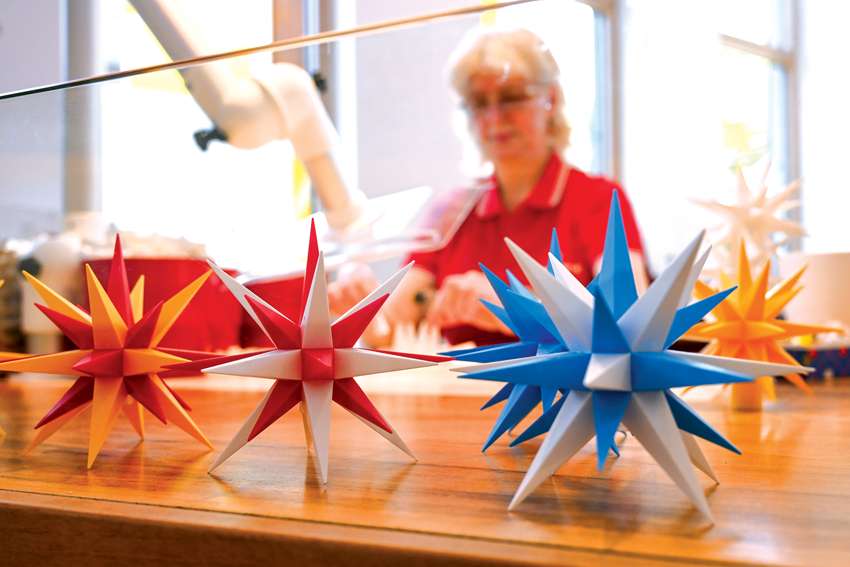HERRNHUT, Germany -- Almost 800,000 Moravian stars in various sizes and colours will leave the factory in the German state of Saxony this year. At least one member of the production team has worked on each and every one of them.
The company is a magnet for tourism and plays a big role in the economy of Herrnhut, a town of 5,000 inhabitants in a region that is structurally weak, reports the German Catholic news agency KNA. More than 64,000 people visit the town every year, and 177 people work at the star factory, which is celebrating its 125th anniversary this year.
The Moravian stars themselves are older: At the beginning of the 19th century, the first of these distinctive jagged stars made of paper and cardboard shone in the boarding school rooms of the local Herrnhuter Brüdergemeine, a Protestant Free Church.
For the most part, the children were at the school as their parents were carrying out missionary work around the world and sent their offspring to be educated at the ancestral seat of the Protestant movement. Today, the Free Church, which Moravian religious refugees founded in Herrnhut, claims to have more than 1.2 million members worldwide, KNA reports.
The stars’ 300-year history is told in a small exhibition in the factory. The exhibition shows that especially during the Advent and Christmas period, the separation from parents was very painful for the boarding school students. The idea arose to have the children always make Moravian Christmas stars in Advent as a symbol of the Christian message of peace for their families — to help against feeling homesick.
A teacher had the idea of using the stars as a template in math classes, to give a better understanding of geometry. He had the children create stars from various geometric templates. This is how the distinctive shape of the three-dimensional Moravian star came about. They are only authentic with 25 points, 17 of them with a square base, eight with a triangular base, placed on a so-called rhombicuboctahedron; they were patented in 1925.
Assembling it is a small work of art in itself, and every Advent it is probably the reason for a few swear words. The many YouTube videos are eloquent testimony to people needing help. Meanwhile, the stars are formed with impressive speed by the factory employees, with each person responsible for a specific step in the process.
There is the “plugger,” who assembles one of the small plastic stars in four minutes. The “point turner” produces about 2,500 star points per day. The “frame gluer” coats the punched-out cardboard frames with glue and places the paper cones on them — around 3,000 a day.
With a boom in sales, there is also a tension between the demand for quality craftsmanship and international demand, KNA reports. Production takes place all year round. For a long time now, the stars have not only been used as Christmas decorations: white ones light up a couple’s wedding day, red ones make for Valentine’s Day decorations, blue ones are great for various countries’ independence days and green ones are perfect for St. Patrick’s Day.
The stars range from eight centimetres in diameter to XXL versions that are 2.5 metres. The latter can be found in the Federal Chancellery in Berlin, in the European Parliament in Brussels or in the Anglican Liverpool Cathedral.
Perhaps the strangest order came from Greenland, with the request to send the package by September, otherwise it would not be possible to find it in the snow when it was dropped from the postal plane. The delivery went out on time, with a big red bow.


